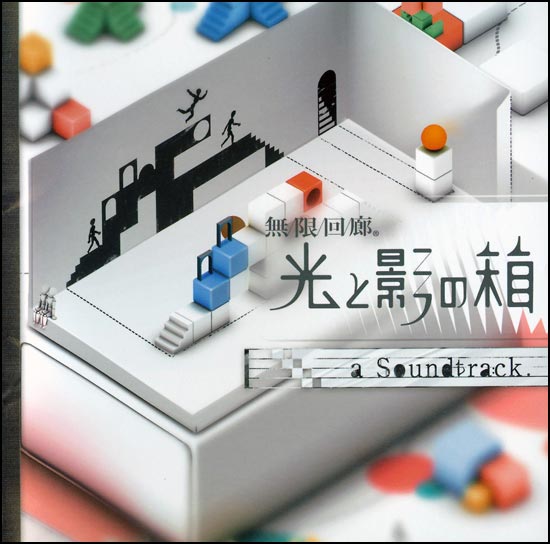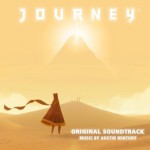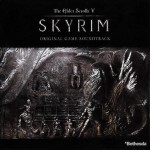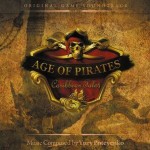Yes, it was just two weeks ago that we mentioned that Hideko Sakamoto is traveling to St. Petersburg, Russia to conduct an orchestra in the performance of his music from echochrome and No Heroes Allowed!, but we’d been meaning to check out his score for echochrome ii for quite some time now.
We posted about the live streamed recording session for this soundtrack last year, where we noted that the game would feature a single track titled “prime # 4507” that would clock in at over 75 minutes in length and act as the soundtrack for the entire game.
Did Sakamoto’s experiment pay off? Find out in our review after the jump.
So, how do you tackle a single, 75-minute track? It goes without saying that there are, in fact, distinct “sections” within the piece, although they do flow seamlessly into one another. If you really break down the transitions, some of them are abrupt, but they’re never jarring.
If you listened to the first echochrome soundtrack, you have the same setup here with two violins, a cello, and a viola, but echochrome ii adds a piano section performed by none other than Sakamoto himself. It’s all live, and it sounds absolutely beautiful. The recording is masterfully done, and the resulting music is playful at times and moving at others. I particularly enjoy the addition of the piano, lending a lot more dynamic range to the individual sections.
The piece rightfully opens with some playful notes on the piano before the string quartet joins in. The first melody is rather adventurous, with some string stabs acting as a driving bass line and the piano providing a sense of rhythm in the background. It isn’t too long before we get into a lovely waltz, now with the piano as the foundation and the strings twirling around an imaginary dance floor. It transitions into something more contemplative as time goes on, and even by this point, about 10 minutes in, you won’t believe how many memorable melodies are tucked away within this piece.
My favorite segment comes in at around the 12 minute mark, where the string quartet drops out and the piano voices a reflective melody. It’s bittersweet in that we know we’ve come a long way, but we can’t help but miss the innocence we’ve left behind. The quartet comes back in to reinforce the melody, creating a very moving and sincere passage that I know is going to stay with me for a long time.
It’s right back into the thick of it afterwards, launching into a bouncy, almost comical section before we approach another “serious” section about 25 minutes in that reminds me of the Live Music by Piano and Strings albums for 7th Dragon and Etrian Odyssey with its great sense of atmosphere. We get into Celtic-inspired territory at one point, which was entirely unexpected but surely a pleasant surprise, and at the 42 minute mark we get to an assertive yet whimsical section with a doubled-up piano and pizzicato string melody that I can’t help but associate with some of Hiroki Kikuta’s town themes.
Towards the end of the piece, we get several reprises of themes that appeared earlier. They come in more triumphant as players plow forward, ever more confident. Even the playful opening section and the incredibly emotional segment I mentioned earlier now burst with positive energy, showing much more maturity in their arrangement. There are a series of lullaby-esque sections before we get a final rendition of the opening theme, ending a soundtrack of epic proportions on the same note on which it began.
There are bits and fragments of genius everywhere within this piece. I can’t describe all of it, as some of these ideas are only 30 seconds in length at times, and several minutes at others. It’s incredible how much detail is crammed into this piece despite the fact that it’s supposed to be a single composition. I’ve listened to the entire piece about a half dozen times, and still manage to find something new each and every listen.
Even more exciting is the fact that this album marks the debut of noisycroak records. It looks like more and more sound studios in Japan are taking it upon themselves to get their music out there, and I think that’s great. SuperSweep is in charge of distribution, and hopefully we’ll see more releases from noisycroak in the future.
In terms of what’s here, not only is there an amazing piece of music for your ears to enjoy, but the packaging is nice as well. You see the cover art above, and the booklet contains an interview with the sound team along with staff and performer credits. There’s tons of highly-stylized artwork throughout the booklet, on the disc itself, in the disc tray, and on the back cover. Unfortunately it’s not widely available, but you can pick it up on Amazon Japan if you have a shipping address there.
Still, you should do your best to try to get your hands on this one. It’s a very ambitious soundtrack, and the experiment really pays off. While previously a fan of Sakamoto’s work, this album really gives me a new level of respect for him as an artist, a performer, and a pioneer.
What do you think of the echochrome series? Does the idea of a single, 75-minute track seem like crazy talk to you?
Tags: echochrome, echochrome ii, Experimental, Hideki Sakamoto, Live, Music Reviews, Noisycroak, noisycroak records, Orchestral, PSN, Reviews, Sony, Videogame









































I just completely gush over this soundtrack every time I listen to it and describe it to people. It’s just plain great, and as a composer myself, this music indicative of my stylistic tendencies and preferences, and is just plain wonderful to listen to.
It’s very colorful and imaginative, and the instrumentation is just pulled off so wonderfully. For me at least, it reminds me a lot of that Hamauzu-like sting and piano writing that I love so much, so i’ll definitely be looking into this a ton more.
I haven’t listened to much by Sakamoto before (which I now fee shameful of), but i’ll definitely be checking his stuff out a TON now!
Great writeup!